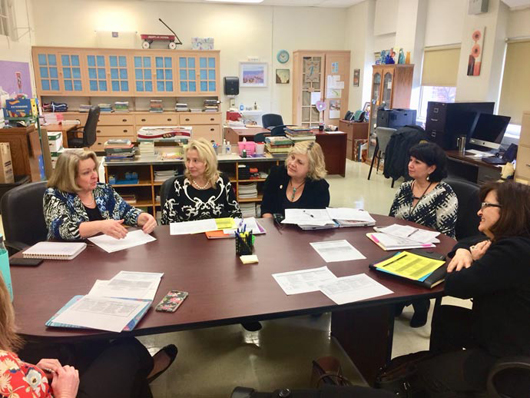Effectively Coaching Principals Series: Aligning Principal Support with District Goals
November 2, 2022

Effectively Coaching Principals Series
In this final part of a 3-part blog series on effective strategies for coaching principals, Natalie Szakacs talks about working with principal supervisors in Knox County Schools, Tennessee on strategies to best align principal coaching support with district goals.
During Part I of the series, Natalie talked about how to build trust with principals, deepen their vision for student learning, and take stock of the improvement strategies they’re already using. In Part II, Natalie discussed how to help principals choose high-leverage strategies and what her coaching support looks like during and between school visits. Part III focuses on aligning district goals and school goals.
Part III: Aligning Principal Support with District Goals
By Natalie Szakacs, Executive Senior Specialist, NIET
Establishing Expectations for the Work of a Principal Coach
Knox County invited NIET in as a thought partner to help them better serve some of their higher need schools that experienced high turnover rates for principals or teachers. They had been engaging in a number of efforts to raise student achievement in these schools, but weren’t yet seeing the gains they desired. They wanted fresh eyes and an independent opinion to help them reflect on the obstacles to growth. District leaders also wanted us to think through the impact those obstacles to growth had on teacher and leader turnover. This context set the stage for the discussion with Knox County district leadership in how to best support their principals.
Julie Thompson, executive director of elementary education in Knox County Schools, shared her vision for us to become a three-person collaborative teams; a principal supervisor, a principal and the NIET coach. She knew bringing me in would create more touch points with each principal, and wanted to make sure neither of us was working with principals in isolation or at cross-purposes. To prevent this, she built our partnership by attending the support visits and participating in conversations I had with principals.
Balancing the District Goals for Supporting Principals with the Principal’s Own Goals for the School
No principal wants two coaches who have differing philosophies on school improvement. So as our coaching began, we made sure to discuss and record the expectations of the district, the supervisor, and the principal. We connected these expectations to the school goals and developed a long-range plan. The plan included action steps for each of us to ensure alignment and to monitor growth. Our collaboration led to clarity; the district support and the NIET coaching provided thinking partners focused on the school’s goals. As we determined what to work toward, I helped to deliver the new learning, build the implementation steps and the supervisor helped to continue the conversations and support with the principal. Then, the principal continued the work, sharing the new learning with their school leadership team. The work was now aligned from the district to administration to coaches and eventually would be embedded into the teacher professional learning opportunities.
The Pros of Using an “Outside” Coach
I’ve found the “what” of coaching is much more important than “where” the coach is from. The best support for a principal is to deepen their ability to analyze what they see in classrooms. If you engage them in conversation that honors their role and builds their capacity, principals don’t care where you come from. They just want help to see what they are missing. In my experience, leaders are open to support, as long as they see it as valuable. It’s not about being an insider or outsider- it’s about being a thought partner. We analyze and learn together. Through this type of coaching relationship we, including the supervisor and the principal, became collaborating partners. My goal in coaching is to get to a place where “outsider” is not a term that anybody wants to use anymore because my support is based on a deep understanding of their action plans and goals. To this end, they see me as their coach, not a presenter, not a boss, and not an evaluator”. The outcomes from this type of coaching relationship creates trust and opens vulnerability, which allows me to support each principal at the right entry point.
Coordinating with Principal Supervisors
As a coach for principals, I worked closely with district leaders who supervised principals. We both adjusted our strategies as time went on by learning from each other. For example, Julie Thompson continued to help me understand each school’s history or any previous work that had been completed, which was critical for me to make appropriate coaching decisions. She described the approach her district team was taking in their support for principals: “This year we focused our observations in more authentic situations where we were embedded for the day, visiting classrooms, attending team meetings, asking questions as appropriate, and working to be thought partners for principals and instructional coaches.” By giving feedback based on in depth observations of principals’ practice, supervisors were able to make their support more relevant, timely and actionable. And, I think she would tell you that the conversations and activities helped her to see instruction from a deeper lens. In any circumstance, if we set up our relationship to be one where we are listening and learning from one another, we will have the greatest success. That approach is reflected in research and NIET’s more than 20 years of experience coaching tens of thousands of school leaders - it is our collective effort that leads to success. This way of working together honors principals and the teachers on their team for their expertise and willingness to grow.
One person doesn’t lead a school or district to greater success on their own - it takes a team! As a coach of principals my goal is to help them build their collective leadership skills to impact a strong team of educators and a strong school community.